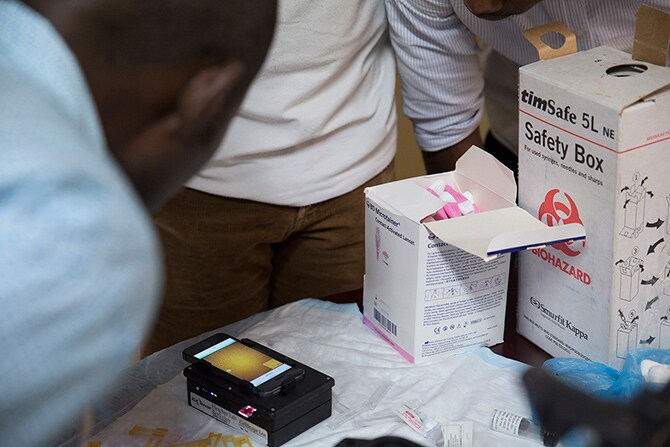LONDON — The death this weekend of Alfie Evans, the 23-month-old terminally ill British youngster, closes a chapter on a tragic case that exposed in the full glare of media attention the friction that can arise in end-of-life cases when families and healthcare professionals are at loggerheads over what is best for a child.
The failure of Alfie’s parents to resist medical opinion, overturn court judgements, and have the final say in their son’s care led to a backlash from the family’s supporters, who mounted an online campaign and demonstrated against administrators and medical staff at Alder Hey Children’s Hospital in Liverpool, England, where Alfie had been treated.
This led to heightened security and a police presence at the hospital amid complaints from hospital authorities that staff had been subjected to “highly abusive and threatening language and behaviour.”
In the Best Interests of the Child
However, experts in medical law say the decision of the courts to back health professionals in this case should not come as a surprise. “The only test is what is in the best interests of the child,” said Charles Foster, a practising barrister [a lawyer specialising in appearing in court] specialising in medical law and a fellow of Green Templeton College at the University of Oxford. “The second thing to understand is that the child is a distinct legal and ethical entity from its parents, and of course you don’t normally take other people’s interests into account in deciding on the best interests of a completely distinct person.”
The case of Liverpool-born Alfie Evans centred on his parents’ belief that they were entitled to the final word on his treatment, irrespective of the professional assessments, which said there was nothing the medical profession could do for their son.
After experiencing seizures at 7 months of age and being admitted to Alder Hey Children’s Hospital, Alfie was diagnosed with a rapidly progressive and destructive brain disease that led to him being in a coma for most of his short life.
“No Chance of Recovery”
“Alfie had a severe neurodegenerative disorder,” Professor Dominic Wilkinson, consultant neonatologist at the John Radcliffe Hospital, Oxford, told Medscape News UK. “It was analogous to a form of dementia but in a very young infant. He had progressively over time lost his neurological functions to the point where…he became dependent on respiratory support.”
Professor Wilkinson said there would have been “no chance of improvement or recovery, just as would be the case, very sadly, for an elderly person with dementia.”
The case drew worldwide media attention after a series of legal challenges by Alfie’s parents, to prevent hospital authorities withdrawing ventilation from their son and offering palliative care instead, were rejected by the courts.
Subsequent attempts to allow Alfie to be taken to the Bambino Gesu Hospital in Rome, Italy, were also rejected.
Alfie’s Timeline
Alfie Evans lived a tragically short life, but it contained an astonishingly large number of events:
May 9, 2016: Alfie Evans is born to parents Tom Evans and Kate James, now aged 21 and 20, respectively.
December 14, 2016: He is admitted to Alder Hey Accident and Emergency Department with a history of coughing, high temperature, and a reported episode of rhythmic jerking of all four limbs and his jaw.
December 19, 2016: An assessment by a consultant in paediatric neurology found Alfie had a slow breathing rate, apnoeas, and his most significant identifiable neurological response was to pain. He was transferred to the Paediatric Intensive Care Unit (PICU).
June 15, 2017: A review by Professor Judith Cross, honorary consultant in paediatric neurology, concluded that Alfie had a progressive, ultimately fatal neurodegenerative condition, most likely a mitochondrial disorder, and that his brain was beyond recovery.
December 11, 2017: Disagreements between healthcare professionals and parents emerge after Alfie’s parents say the hospital had applied to the High Court to withdraw their son’s ventilation.
February 20, 2018: Mr Justice Hayden ruled in favour of the hospital authorities, saying he accepted medical evidence that showed further treatment would be unsuccessful.
March 6, 2018: After Alfie’s parents mounted a legal challenge to the ruling, the Court of Appeal upheld the ruling by Mr Justice Hayden.
March 20, 2018: Supreme Court justices refused to give the couple permission to mount another appeal.
March 28, 2018: Judges at the European Court of Human Rights rejected a bid from Alfie’s parents for them to examine issues relating to Alfie’s future and dismissed claims of any human rights violation.
April 11, 2018: Mr Justice Hayden endorsed an end-of-life care plan for Alfie drawn up by specialists.
April 16, 2018: Claims by Alfie’s parents that their son was being wrongly “detained” at Alder Hey were overruled by the Court of Appeal.
April 18, 2018: Tom Evans meets Pope Francis in Rome and asks the leader of the Catholic church to help save his son’s life.
April 23, 2018: Pope Francis intervened, tweeting an appeal “that the suffering of his parents may be heard and that their desire to seek new forms of treatment may be granted.” But the European Court of Human Rights refused an application made by Alfie’s parents to take their child to Rome. At around 9 pm, Tom Evans reports that life support had been withdrawn from Alfie by doctors.
April 25, 2018: The Court of Appeal rejected an appeal by Alfie’s parents against a High Court ruling that the child could be taken home, but not abroad.
April 26, 2018: Alfie’s father told the media that he would meet doctors to “start asking to go home.”
April 28, 2018: Alfie’s parents announced on social media that their son died at 2:30 am.
Clinicians and the Courtroom
The legal framework for cases such as Alfie’s rests with the Supreme Court, the highest court in the United Kingdom.
Sara Forvague, reader in law at Lancaster University, told Medscape News UK via email: “Such disagreements highlight questions about the role of the State, in the form of the courts, in family life, with respect for private and family life enshrined in UK law via the Human Rights Act 1998. This Act incorporated the European Convention on Human Rights into UK law.”
The case has raised questions about whether a new regulatory framework could prevent the adversarial legal disputes that have characterised this and similar cases. Not according to Charles Foster, who said: “I think the test works well.”
He continued: “I think it would be really dangerous if parents who, understandably, are terribly close to the case and are emotionally involved with it had a right to say that a child who it had been found was suffering, or whose continued existence was futile, should, because of their own prejudices or concerns, or simple love, go on to have treatment which is found to be burdensome.”
He said that in the case of Alfie Evans’ proposed trip to Italy, the court took into consideration that movement of the patient would involve an increased risk of infection, shaking during a journey could provoke further seizures, and there would be difficulties maintaining his anticonvulsant regime.
The views of the parents are not irrelevant, according to Sara Forvague, who said that nevertheless the child’s welfare is the primary consideration. “This does not mean that the views and wishes of parents are irrelevant, but that the court’s focus is on what is best for the child — and not what is best for the parents.
“This is important because while most parents will have the best interests of their child at the centre of their thinking, parents can sometimes make decisions which are not, or do not seem to be, in their child’s best interests. And this is the point at which a court may intervene.”
The Charlie Gard Case
The case of Alfie Evans echoes the similar recent case of Charlie Gard, a baby from London born with a rare genetic disorder, mitochondrial DNA depletion syndrome, which causes progressive brain damage and muscle failure.
That case also attracted media attention because the baby’s parents disagreed with medical professionals at London’s Great Ormond Street Hospital about whether experimental treatment offered by a neurologist in the United States would be beneficial.
After an extensive legal battle, the High Court decided that Charlie should be taken off a ventilator and moved to a hospice, where he died shortly afterwards. At the time, The Washington Post wrote that the case had become “the embodiment of a passionate debate over his right to live or die, his parents’ right to choose for their child and whether his doctors had an obligation to intervene in his care.”
Public Feeling and the Role of the Media
A notable feature of the Alfie Evans case was a vociferous campaign waged by some members of the public in support of the child’s parents and directed, with varying degrees of animosity, against Alder Hey hospital staff.
This led to some staff feeling intimidated and concerned about reporting for work.
In an open letter on April 25 — two days after ventilation was withdrawn from Alfie — the chairman of Alder Hey Children’s NHS Foundation Trust, Sir David Henshaw, and the chief executive, Louise Shepherd, said they had been at the centre of a “social media storm” and that staff had experienced “unprecedented personal abuse.”
The letter said staff had been “shocked” by the reaction from some organisations and individuals that required police intervention to ensure the safety of staff, patients, and visitors to the hospital.
“Our nursing, medical and support staff come into work each day at Alder Hey determined to do the best for our patients and those who care for them,” the letter continued, but said the “many untrue statements about our work and the motivations of our staff” had been “hard to bear.”
Wilkinson, who is also director of medical ethics at the Oxford Uehiro Centre for Practical Ethics at the University of Oxford, said this is likely to have been compounded by members of Alfie’s medical team having misgivings about his treatment. “There’s a high incidence of what’s sometimes called ‘moral distress’ in intensive care units where health professionals find it incredibly challenging when they’re in a situation where they are forced to do things that they feel goes against their deeply held moral values.
“In this case, and in others like it, that is to provide treatment and to perform interventions on a child that they feel are not helping the child and may potentially be harming the child because they might be causing the child discomfort.”
Professor Wilkinson says this would have been compounded by the “public attention and threats, verbal abuse [and] harassment that this case has seen.”
He adds: “One of the things that I sometimes point out is that the easiest thing to do for the professionals in this situation is simply to do what the parent asks.
“I think it’s a measure of just how strongly the professionals felt that that would be the wrong thing to do that they were prepared to take the painful step of going to court.”


